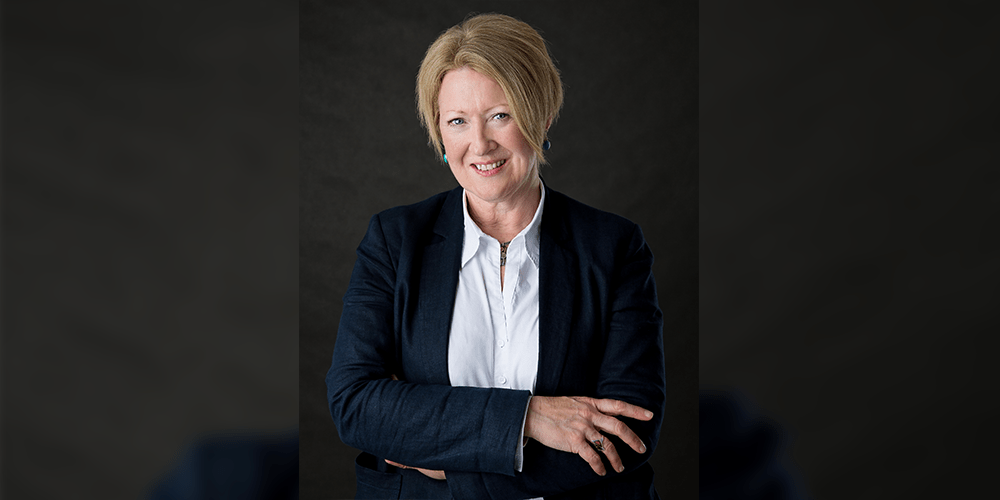What we see on TV, in film, adverts, and music videos frames the ways we think about romance, coupledom, and the world. Isabelle Cassar Fiott talks to Prof. Brenda Murphy about how non-mainstream couples find an unexpectedly welcoming space in sitcoms.
Imagine growing up knowing that it’s OK to be different, that everyone has the right to be loved, regardless of their race, gender, sexual orientation, age, or whether or not they are differently abled. ‘Finding love, being in love, being loved is the most human condition,’ says Prof. Brenda Murphy from the Department of Gender Studies at the University of Malta. In her recent research, she looked into the role of wellbeing and humour in shaping representations of couples in sitcoms.
Collins Dictionary defines coupledom as ‘the state of living as a couple’. Shelly Budgeon suggests that coupledom is central to our society as it underpins the ideology of marriage and family. This leads to privileging sexual coupledom over other forms of relationships.

Conservative stereotypes thrive where culture is a commodity, where it objectifies and excludes some individuals. Creators of media products have underlying intentions, be they political, monetary, or ideological gain. When films of different genres, TV series, music videos, and advertisements are heteronormative, we, as members of the audience, absorb and carry these messages with us. Conversely, when media products accurately represent couple diversity, we have an opportunity to break stereotypes and normalise those couples.
Acclaimed art critic John Berger and feminist film theorist Laura Mulvey reveal the omnipresence of voyeurism and the male gaze. Almost every piece of mainstream art depicts women through heterosexual male eyes. This is hardly surprising, as the film and entertainment industry was and still is male-dominated. What happens when non-standard couples enter this landscape?
Finding love, being in love, being loved is the most human condition.
Let us compare the French movie Blue Is The Warmest Colour, directed by male director Abdellatif Kechiche, and the German film Mädchen in Uniform, directed by Leontine Sagan in 1931. Both feature lesbian couples. Made through the eyes of a woman, Mädchen in Uniform was one of the first-ever feature films to bring a lesbian relationship to the big screen. The film captures the childlike naivety of two young women unexpectedly catching feelings for each other in a time when lesbianism’s existence was barely acknowledged.
Meanwhile, Blue Is The Warmest Color faced backlash for hyper-sexualising the two protagonists’ relationships under the guise of its storyline being queercentric. Instead of focusing on the intimate moments between the two, multiple scenes abruptly cut from the women talking to them intertwined in bed, as the camera voyeuristically pans up and down their bodies. Constructed, envisioned, and filmed through the ‘male gaze’ without any alternative way of seeing, the film makes it impossible for the audience to connect to these girls.
Media expert Murphy set out to explore whether such a pattern applies to sitcoms – comic TV series centred on a fixed set of characters. A sitcom fan herself, she found ample instances of positive coupledom portrayal and diverse representation in terms of age, sexuality, and race as well as differently abled characters. Her findings became the basis of a book chapter Framing Couples: stereotypes, romance and idealized romance in the media.
All these shows stand out in their authenticity, Murphy says. ‘Each show takes a character who would usually be sidelined, and places them front and centre.’
While past research has thoroughly analysed drama and horror, Murphy picked comedy and took a closer look at internationally popular sitcoms. In her words, sitcoms ‘hearten her’. She didn’t have any difficulty finding representations of disability, so rare in other genres. Through Murphy isn’t sure why sitcoms better represent people across all boards, she has identified one possible reason: ‘One of the main variables around wellbeing is humour. The wellbeing and feel-good factor which surrounds the genre is infectious, so if you’re going to do good comedy, it makes sense to be as inclusive as possible.’ Murphy used the framework of positive psychology, wellbeing, and humour to analyse six TV series.
In The Odd Couple, two men are platonically cohabitating, creating a form of coupledom which, in her words, successfully ‘plays on and parodies gender roles’. Speechless explores the ups and downs of a family who has a child with a disability. The Middle follows a lower middle class family living in Indiana in the US, where two parents with three children struggle with home life, work, and raising children. The Carmicheal Show focuses on a middle class, African American heterosexual couple who, in Murphy’s observation, ‘systematically make statements on social and political issues such as gender equality, Trump vs Obama, race, and social justice’. Boy Meets Girl depicts a transgender woman and plays around with the heteronormativity of coupledoms with the director and producer choosing to cast a transgender actor as their trans primary character.
Finally, in Grace and Frankie we meet two women who come to live together when their marriages fall apart. Against the backdrop of the well-documented trend that women become invisible on screen as they age, Grace and Frankie embraces older women’s sexuality and freedom. These two are an unconventional couple who are neither romantically nor sexually involved, and yet, they are there for each other. All these shows stand out in their authenticity, Murphy says. ‘Each show takes a character who would usually be sidelined, and places them front and centre.’
How and why is this important? Diverse couples should have their existence acknowledged even when they don’t conform to the societal norm. Producers and directors have the power to use media as a cultural platform to communicate values to the masses. It is the responsibility of these professionals to push for more accurate and genuine representations. Murphy, who is all too familiar with the doom-and-gloom findings in media research, is heartened to find positive examples and practices: ‘When it comes to the media, we are usually taking a critical standpoint. We spend a great deal of time looking at negative data and scenarios – it’s nice to look at the positives for a change’.
Further Reading:
Budgeon, S. (2008). Couple Culture and the Production of Singleness. Sexualities. 11: 301-325. 10.1177/1363460708089422.
Mulvey, L. (1999). Visual Pleasure and Narrative Cinema. In Braudy, L. and Cohen, M. (eds.), Film Theory and Criticism: Introductory Readings. New York: Oxford UP, pp. 833-44.
Murphy B. (2020) [forthcoming]. Framing Couples: stereotypes, romance and idealized romance in the media. In Abela, A, Piscopo, S., & Vella, S. (eds.), Couple Relationships in a Global Context: Understanding love and intimacy across cultures. National Centre of Family Research of the President’s Foundation for the Wellbeing of Society; Springer.





Comments are closed for this article!